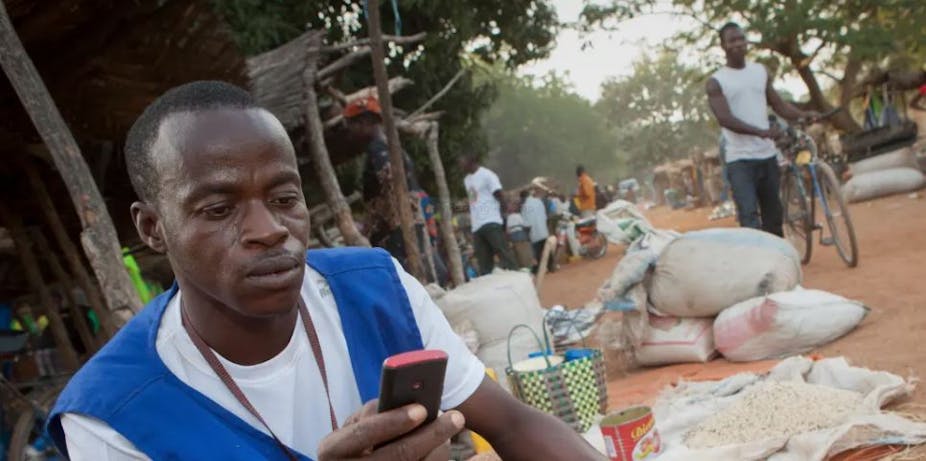Digitisation could change the game for agriculture in Africa. That’s a key message in a report recently released by an international institution that enhances smallholder farming in African, Caribbean and Pacific countries.
The Centre for Agricultural and Rural Cooperation (CTA) focuses on poverty reduction through modernising smallholder farming by fostering innovation and knowledge sharing.
Digitisation refers to everything from delivering farming advice via text messaging to interactive voice response. It also includes smart phone applications that link farmers to multimedia advisory content, farm inputs, and buyers. And it covers the use of drones and satellite systems to inform farmer activities, such as crops and times to plant; and types and amounts of inputs to use.

Other global organisations have echoed this message. These range from NGOs like Solidaridad Network – a civil society organisation that accelerates sustainable and inclusive development – to the World Bank. These organisations believe that digital technologies can create employment for young people in the agricultural sector, promote economic activity, and enhance food security.
For the past two decades, digitisation has steadily transformed African farming. In Ghana, for instance, online platforms such as Esoko, Farmerline, and Trotro Tractor have provided farmers with accessible services. These have included voice messages and SMS extension advice. This helps farmers obtain information about how to access markets and extension services..
Elsewhere on the continent, international organisations help provide precision advice to farmers. An example is the CTA’s ‘Transforming Africa’s agriculture: Eyes in the sky, smart techs on the ground" project that supports the use of drones for agriculture.
The continent’s digital agriculture industry is growing. The number of farmers subscribed to digital services has grown by between 40% and 45% per year in the last three years.
Annual revenues from digitally supported farming are estimated at about $140 million. Services are provided by a small but growing number of providers — some of which are estimated to generate €90 of revenue per farmer annually, partly through service charges. This trend looks set to continue.
But the success of digitisation in agriculture shouldn’t just be evaluated by its economic value. Its benefits must be enjoyed by smallholder farmers and rural populations. Smallholder farmers, most of whom have access to less than two acres of land, produce more than 80% of the food in sub-Saharan Africa.
African smallholder farmers will ultimately determine the continent’s digital farming story. Only through collaborations with them, and among sectors, will the digital transformation become a success in Africa.
Challenges of smallholder farming
Smallholder farmers face daunting political, economic, social, cultural, and institutional barriers. They have limited access to information, markets, capital, land tenure, and even basic inputs like fertilisers and seeds.
Government policies, and the influx of foreign land grabbers in many African countries, only worsen the situation. Ethiopia, Ghana, and South Sudan are among the hot beds for foreign land deals.
Added to these are environmental issues like soil erosion and a changing climate. In recent years, droughts, rising temperatures, and El-Niño events left nearly thirteen million people from Kenya, Ethiopia, and Somalia needing humanitarian assistance.
This makes traditional farming hard for smallholders across the continent, and can undermine their capacity to fully benefit from the digital revolution.
Also, connectivity tends to be limited in rural areas. And, even if farmers can connect, they may not have enough money to access the services.
These concerns limit the production and profits of farmers and undermine rural development. This is where digitisation comes in. It has potential to increase access to information and resources to provide solutions.
Elsewhere, digital technologies are already showing promise for rural farmers. The Chinese government partners with private actors like Alibaba to digitise agriculture. From web-portals to Mobile Internet Based Services, rural farmers benefit from access extension advice and capital. This leads to increased productivity and incomes.
Inclusion in digitisation
There have been positive strides in ensuring smallholders become involved in digital agriculture. An estimated 33 million people – about 13% of all sub-Saharan African smallholders and pastoralists – are already registered for services such as weather updates and market linkages.
Ethiopia’s “80-28” hotline - a farmer advisory service - has about 4 million users, the highest on the continent. Beyond being a free service, its success is partly due to the delivery of services in local languages. Aligning services to local circumstances encourages farmers to subscribe willingly.
Kenya leads the way in digitisation in Africa. Collaborations between agriculture and telecommunication has been instrumental in their success so far.
What’s missing
These examples show what is necessary to help smallholders become connected to digital services.
One additional strategy is to blur the boundaries between different sectors. Digitisation is not just an agricultural issue, or a technological one. It involves many parts of the economy. Hence, digitisation must be situated within a broader development and poverty reduction agenda. For instance, education is critical to farmers’ ability to use and benefit from digital technologies.
It is also crucial to place smallholders front and centre when designing policies and specific digital products meant to help them. In this way, digital transformation will reflect the users’ needs.


